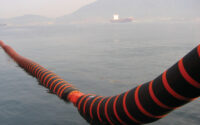The Important Features That Make Marine Breakaway Couplings So Vital
Marine Breakaway Couplings (MBCs) are an essential safety device in many onshore and offshore installations where fluids are transferred from vessel to vessel, usually under a considerable amount of pressure. In these conditions, an uncontrolled failure of the fluid transfer system can have potentially devastating consequences, both in terms of human safety and in damage to equipment and facilities.

1) They Offer Instant ActionUnder high pressure fluid flow conditions, every split second counts when it comes to preventing and reducing damage and possible casualties. An MBC is extremely fast acting, and will shut off the flow almost instantly when conditions require it.
2) They Operate Without Supervision or Monitoring
An MBC requires no operational oversight once installed. Although proper maintenance and checks for corrosion and other problems are necessary during ongoing use, the actual vital task of the MBC – cutting off fluid flow under dangerous conditions – is fully automatic and requires no human or computer supervision.
3) They Need No Power Source to Operate
An MBC needs to perform its function under all conceivable emergency conditions, and this includes those where power is shut off for whatever reason. An MBC is a passive device that requires no power source for it to be triggered and to act, and its successful operation does not rely on having power available. This makes the devices highly effective no matter the nature of the emergency.
After these primary features of MBCs which are inherent to their design, there are also a set of secondary features which are highly desirable, and which you should ensure are present in the particular model of MBC which you install in your facility. These include:
– The MBC should be fully reusable, and easy to be put back into service after an activation.
– It should have a fully adjustable cut-off speed to match its specific working conditions, and this speed should be able to be altered without dismantling the device.
– The valve’s workings should be designed to be kept separate from the fluids being transferred, so as to reduce the risks of corrosion, erosion or clogging, and to extend the working life of the coupling.
– It should be as simple as possible to carry out a visual safety and corrosion inspection of the device without taking it out of service.
– The MBC should be to all intents and purposes undetectable in use, so as not to hinder the normal operations of the facility.
– It should be easy to handle, which means it should be as lightweight as possible, and ideally of a lesser diameter than its surrounding hoses and fittings, so as to reduce the chances of physical knocks causing accidental activation.
All of this and more is possible with the best-in-class examples of MBCs, which we will be happy to demonstrate and specify to your requirements. For a complete guide to MBC’s click here for full details.

